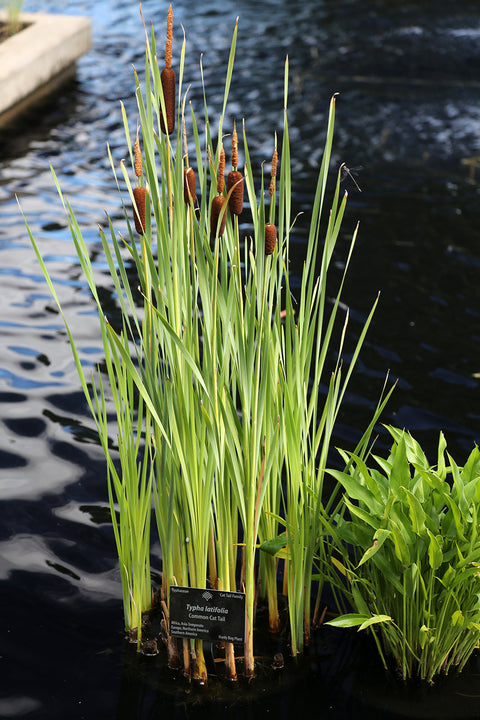
Common Cattail <br> (Typha Latifolia) <br> Live plants!
🌾 Common Cattails (Typha latifolia)
Hi Friends!
Looking to add a classic, natural touch to your pond, lake, or marshy area? Say hello to Common Cattails — tall, graceful, and a true favorite in wild wetland spaces all across the country. Whether you call them cat tails, cattail plants, bulrush, or cat-o’-nine-tails, this well-known plant brings both beauty and benefits to your water garden.
🪴 Quick Facts:
-
Height: 6–10 feet (or even taller!)
-
Spread: 2–4 feet, but can spread fast over time
-
Sunlight: Full sun to part shade
-
Water Depth: Moist soil to shallow water (up to 8 inches over crown)
-
Bloom Time: Summer with signature brown catkins (flower spikes)
-
Zones: Cat-tails are Hardy in USDA Zones 3–12
🌿 Why Gardeners Love Cattails:
-
Natural Beauty: The cattails flat green leaves and tall brown catkins sway gently in summer breezes—just like you see in wild marshes or lakes.
-
Wildlife Shelter: Ducks, frogs, and small critters love the protection they offer.
-
Erosion Control: Cattails help stop soil from washing away on pond or lake banks.
-
Cattails are Water Cleaners: Excellent for phytoremediation, they absorb heavy metals and pollutants from water.
-
Bug Busters: By drying up soggy low spots, cattails can stop mosquitoes from breeding. This is why states plant them in drainage ditches along the side of the road or highways in the USA.
🌱 Cattail Planting Tips:
Cattails grow like champs in muddy, soggy areas or standing water. If you're planting in a pot first:
-
Use heavy loam soil and avoid disturbing the roots.
-
Keep the potted plant in shade and above water for 3 days to let it adjust.
-
After that, place the pot in a shallow area with water just over the roots.
-
Do not fully submerge the crown (top of the root)—they need some air while rooting.
Once established, these plants grow deep roots and spread by rhizomes (underground stems) and by seeds. They love full sun but can still grow in partial shade.
⚠️ A Word of Caution on Cattails:
Common Cattails can become invasive.
After one season, cattails may take over space quickly—so be sure you want them to stay a while! They're tough to remove once rooted deeply into pond soil.
💡 Fun Facts:
-
"Typha" comes from the Greek word for marsh—how perfect!
-
"Latifolia" means broad leaves.
-
After WWI, people studied cattails as a food crop. They can produce more starch per acre than potatoes, rice, or yams!







